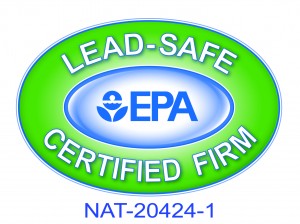Painting services are required to abide by the new EPA regulations coming into effect on April 22, 2010. Specifically, it requires painting Contractors to distribute the “Renovate Right” brochure to the owners of pre-1978 child-occupied buildings. Additionally, house painting contractors are now required to be certified by the EPA, have the painting work supervised by a “Certified Renovator” and ensure that EPA-prescribed procedures are followed during painting activities.
It is a pleasure to announce that Painting in Partnership is now a “Lead Safe Certified Firm” and that three of its employees have become “Certified Renovators” to meet the EPA regulations. Below is some background information on the new regulations.
Lead was used as a paint ingredient for generations in the United States because of its durability features. It is estimated that 50 million tons of lead was used in American homes by painting services before it was banned in 1978. (Ironically, Europe moved to ban lead in paints in 1921, more than 50 years prior to this country.)
Lead has been proven to be especially dangerous to children under the age of six. The main exposure comes from ingesting lead dust that accumulates on floors and carpeting. It gets absorbed from hand to mouth during play activities. This dust is largely generated from remodeling projects, such as painting, that disturb lead or the up and down movement of windows surfaces. The intent of the new legislation is to protect children of six years of age or younger during restoration projects.
Painting in Partnership continues to be on the cutting-edge of painting technology and work practices in order to give you the best long-term result, while keeping you safe.








 Follow
Follow

